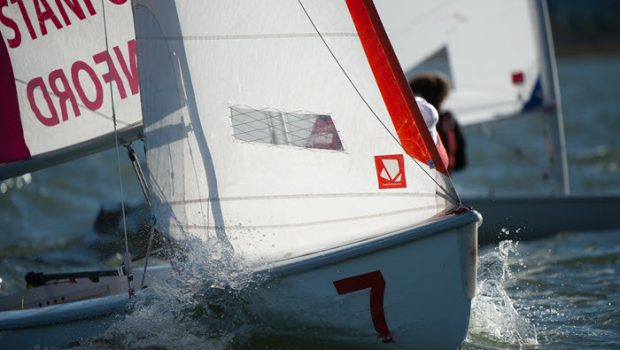Why does Stanford have varsity sailing?
Published on March 19th, 2019
by Eric Zorn, Chicago Tribune
I was shocked to read that Stanford University had fired head varsity sailing coach John Vandemoer in the wake of a federal investigation into shady college admissions practices nationwide.
Authorities allege that Vandemoer accepted more than $600,000 in donations to the sailing program in exchange for agreeing to falsely designate Stanford applicants as elite sailors he was recruiting for his team.
Ahoy! Stanford has a varsity sailing team? Indeed it does. So do a lot of other schools.
Why? That’s a big question that looms over this entire, mortifying scandal that has resulted in charges against at least nine coaches and 33 parents accused of using various foul means to secure spots for students in elite universities.
Nothing against the physically and mentally demanding sport of sailing or those youths who have demonstrated significant aptitude for it. But why does Stanford sponsor two sailing teams, one for men and one for women?
Why does the school offer special preference in admissions to those who know how to sail? Why does it pay a coach and assistant coach to oversee their training and send the team around the country to compete?
It can’t be because the schools expect to profit off the fans of these minor sports. The number of non-sailing teens who have ever been attracted to a college or university because of its sailing team is approximately if not literally zero.
And the same is likely true of volleyball, water polo, tennis and soccer, other sports that have been implicated in the investigation.
In fact, I’m confident that non-participants aren’t choosing to apply to schools because they do or don’t field intercollegiate teams in golf, fencing, rowing, field hockey, wrestling, swimming, lacrosse, gymnastics, squash and other minor sports with tiny fan bases.
So why do so many schools sponsor such teams?
“By competing in college sports, student-athletes learn important skills such as leadership, time management and how to work with others toward a common goal,” says the NCAA website.
That’s an excellent argument for robust, highly inclusive intramural sports programs that extend these mind-body benefits to as many students as are interested.
But it’s a weak argument for prolonging the tradition of devoting a disproportionate amount of often scarce resources to a narrow segment of the student body, and for reserving admission slots for those who happen to be good at otherwise generally unmarketable skills.
“The purpose of college is learning academic material, developing critical thinking and occupational skills and teaching young men and women how to be good citizens,” said Lehigh University political scientist Anthony DiMaggio. “But a sports monster has taken over our universities.”
In a 2014 essay titled “Why Higher Education Should Rid Itself of College Athletics,” DiMaggio wrote that “spending millions on college athletics seems like an unnecessary indulgence and a misappropriation of valuable funds” given that the vast majority of college sports programs lose money, that schools are cutting costs by hiring adjunct teachers instead of tenured professors and that students are paying ever-higher tuition rates.
The developments of this scandal“are just a new wrinkle in an old story,” DiMaggio told me after the news broke. He said he’d softened his thinking a bit since he wrote the essay, and now has the view that schools should preserve any sport with a positive cash flow — one that at least pays for itself with ticket sales, merchandising and broadcast rights.
By those standards, some schools’ football and basketball programs would survive as is. They do attract students who enjoy the pageantry and spirit of the games.
Many other programs, however, would have to curtail scholarship offers and coaching salaries, and the rest would disappear (saving lots of money and, in the case of football, at least a few young brains).
But sailing, volleyball and the like would become club or intramural offerings, extracurricular opportunities along the lines of the fancy climbing walls and swank workout facilities my kids and I saw in our many college tours.
Most institutions of higher learning would come to resemble Spelman College in Atlanta, a school of some 2,500 students that eliminated team sports and dropped out of the NCAA in 2013. Administrators spent the savings on an expanded wellness program.
“All of us have to look at everything we are doing — what’s the value being added to the university and at what cost?” school President Beverly Tatum told The New York Times then.
It’s a long-running scandal, on top of the current scandal, that more university presidents aren’t asking themselves the same question. Maybe now they will.
Source: Chicago Tribune
Editor’s note: Stanford is one of the few varsity programs in the 20-team Pacific Coast Collegiate Sailing Conference, and has built up its program to a point where it rarely competes against the lesser-skilled club teams in its conference. At the completion of the Fall Season, Stanford was nationally ranked 10th in coed and 15th in women’s.









 We’ll keep your information safe.
We’ll keep your information safe.